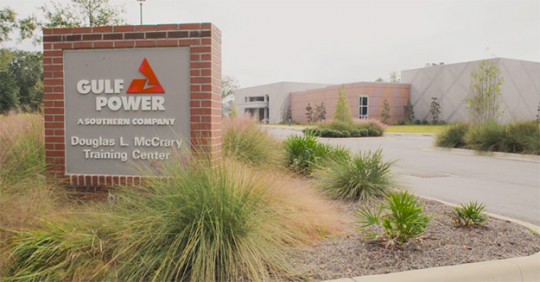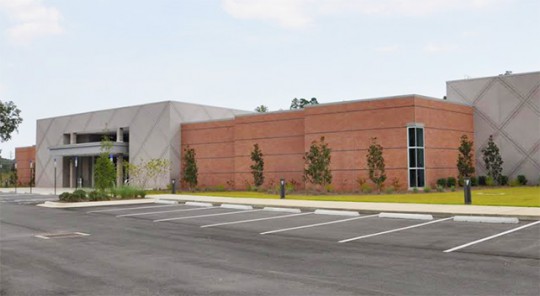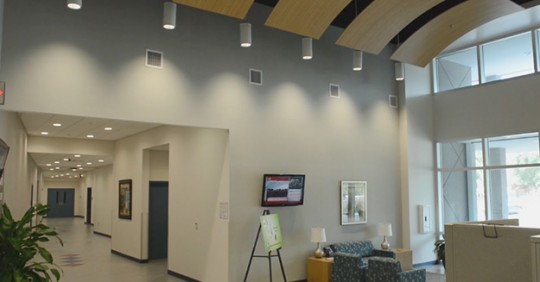Gulf Power’s Storm And Training Center Captures Awards
November 8, 2015
After Hurricane Ivan hit Pensacola as a Category 3 storm in 2004, Gulf Power employees knew that in the future they would need a true storm center from where they could lead customer restoration efforts.
Jump ahead to 2015 — Gulf Power’s storm center, designed to withstand a Category 5 hurricane and winds up to 200 mph, has received one of the top awards for its design and durability.
“The awards are significant, but the bottom line is this center is a modern hub that will help us restore power to our customers more quickly and safely after a major storm,” said Rick DelaHaya, Gulf Power spokesperson. “And the majority of the year, our employees train there for their day-to-day duties.”
 Referred to as “rugged, reliable, beautiful and sustainable” by Precast Concrete Institute, Gulf Power’s “Douglas L. McCrary Storm & Training Center” was recently awarded first place in the Category of Sustainable Design for their 2015 Design Awards. The Precast Concrete Institute is the technical organization for the pre-cast and pre-stressed concrete industry. PCI conducts research and development, publishes technical manuals and provides technical resources for the precast concrete industry.
Referred to as “rugged, reliable, beautiful and sustainable” by Precast Concrete Institute, Gulf Power’s “Douglas L. McCrary Storm & Training Center” was recently awarded first place in the Category of Sustainable Design for their 2015 Design Awards. The Precast Concrete Institute is the technical organization for the pre-cast and pre-stressed concrete industry. PCI conducts research and development, publishes technical manuals and provides technical resources for the precast concrete industry.
Opened in 2014, the 30,300-square-foot building was built with pre-cast concrete walls, roof and framework to sustain 200-mph winds of a Category 5 hurricane.
Primarily designed as a training center with state-of-the-art classrooms and meeting rooms, the building can quickly transform into a central emergency operations center to coordinate customer restoration efforts after a hurricane or other natural disaster.
Jim Fletcher, Gulf Power’s vice president of external affairs and corporate services, said the employees involved in the project, as well as the design firm, Townes + Architects, P.A., and the builder, The Morette Company, had one goal in mind: build a sustainable center where crews and employees could be coordinated to get customers power back on quickly after a major storm.
“When we look at restoring customers’ power after a tropical storm or hurricane, we want to be able to do it in the most efficient way possible,” Fletcher said. “All the teams worked well together keeping this in mind and this facility serves our customers using sustainable design and construction.”
The facility also received LEED Certification by the U.S. Green Building Council. LEED — Leadership in Energy and Environmental Design, is an internationally recognized green building certification system, which recognizes buildings designed and constructed in an environmentally sustainable manner, providing energy savings, water efficiency, CO2 emissions reduction, improved indoor environmental quality and stewardship of natural resources.
Among the features that helped the building achieve LEED certification is a geothermal HVAC system, four charging stations for electric vehicles and LED lighting that illuminates the parking lot.
According to Ben Townes, principal architect for the project, the pre-cast concrete design also helped the building achieve LEED certification, since it included both recycled material and is fully recyclable, contributing to the overall sustainability of the project by providing durability and reducing maintenance.
“We had to be very innovative to achieve the LEED points to become certified,” said Townes. “It was truly a team effort, — that’s what made the project so successful.”





Comments